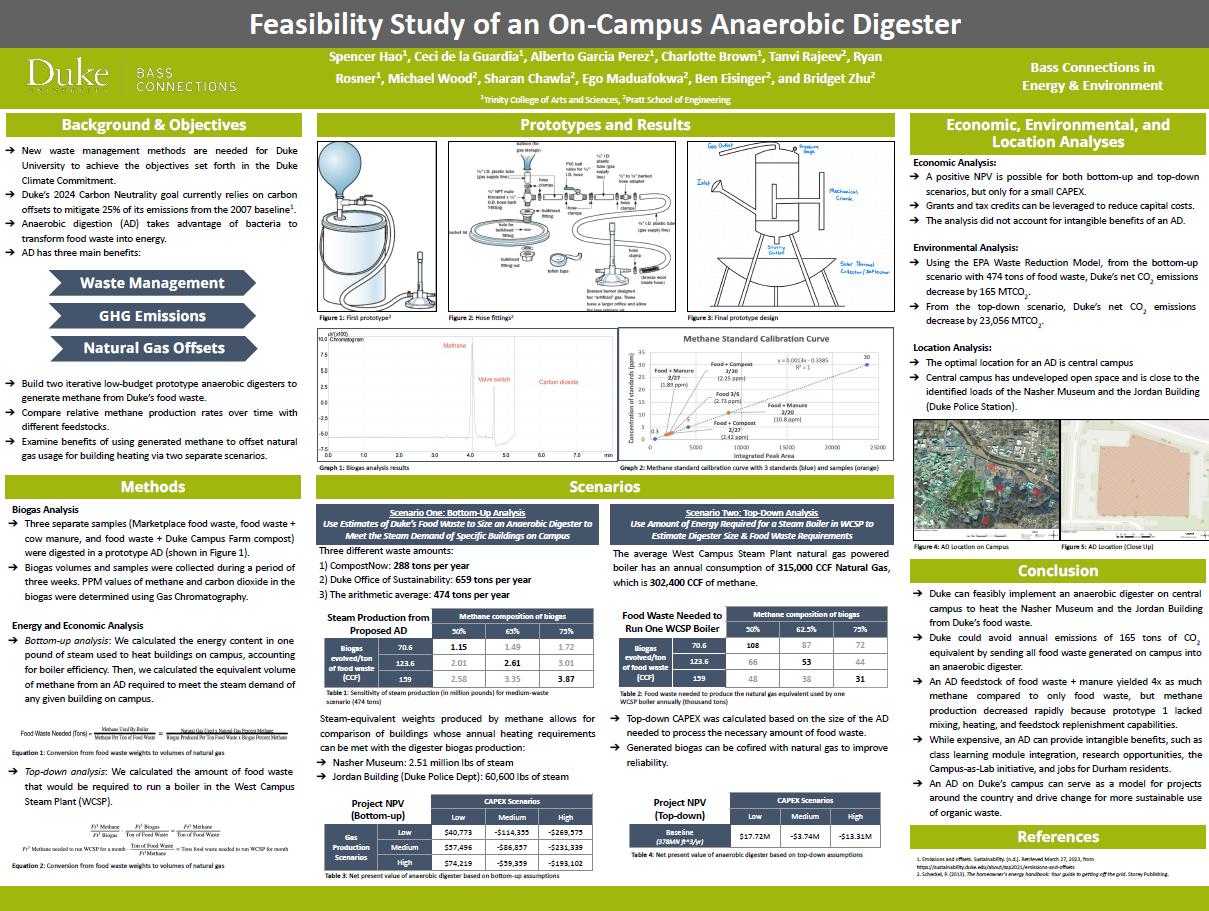

To explore the breadth of issues that confront our society in its need for clean, affordable and reliable energy, students on this team partnered with faculty on year-long projects focusing on identifying, designing and prototyping new energy technologies, systems or approaches. Subteams addressed the tradeoffs among technological design choices, environmental impacts, economic viability and other issues related to use. Their goal was to produce a useful prototype and evaluate its environmental benefits and viability.
This year, students created a low-budget prototype anaerobic digester to generate methane from Duke’s food waste (below), an energy information tool to increase transparency in Duke's energy usage, and a piezoelectric energy prototype.
Feasibility Study of an On-Campus Anaerobic Digester
Poster by Spencer Hao, Ceci de la Guardia, Alberto Garcia Perez, Charlotte Brown, Tanvi Rajeev, Ryan Rosner, Michael Wood, Sharan Chawla, Ego Maduafokwa, Ben Eisinger and Bridget Zhu
Our team built two iterative low-budget prototype anaerobic digesters to generate methane from Duke’s food waste. Then, we compared relative methane production rates over time with different feedstocks and examined the benefits of using generated methane to offset natural gas usage for building heating via two separate scenarios. Our team found that Duke can feasibly implement an anaerobic digester on central campus to heat the Nasher Museum and the Jordan Building from Duke’s food waste.
